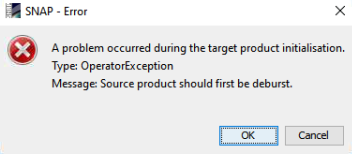I want to finish interferogam by Snap,because my study area is very little in a swath ,I dont want to process the whole swath ,how can I subset the area in swath.
I think the subset workflow is as follow:deburst->merge->subset->coregistration
am I right?
Use S1 TOPS Coregistration as the very first step. You can reduce the desired area already here by selecting a sub-swath and the respective bursts.
if you then need even smaller areas you can subset it after debursting.
you means the procedure is S1 TOPS Coregistration ->subset(each swath and burst)->deburst?
no, T1 TOPS Coregistration, interferogram generation, deburst, (subset if still necessary)
See here how you can subset at the fist step:

ok,its needs a lot of memory ,do you know how to check image pixel value in Snap
you mean backscatter intensity before terrain correction?
NO,just the image value,for example,in the coherence image,I want to to know the Coherence coefficient value of the pixel
I want to know why we must interferogram the area that we do not need,it really waste time
you could also use TOPS Split for both scenes, apply orbit, coregister, compute coherence, terrain correct and then retrieve the value. But that’s not faster than starting with the TOPS coregistration. If you unzip the data before running it, 8 GB RAM should do.
Besides that, coherence of one specific pixel doesn’t say much as coherence is calculated over 10 to 2 pixels

an interferogramm, especially unwrapped, is something that is generated based on a larger area. You need some context to put the fringes into a perspective, understand the patterns, and so on…
You cannot just retrieve the displacement of a single pixel with traditional InSAR.
And the small bursts of S1 are quite small in the end, that shouldn’t waste too much time.
can I deburst the image first and then do the interferogram
that leads to jumps in your fringes, I would not recommend that, unless you are only using one single burst.

for example ,It takes about 20 minutes when I process Topographic Phase Removal on one swath,the interferogram takes about 40 minutes
Coherence window should be at least twice the size of 2 * 10 pixels to reduce biases.
no need to process the full swath if you reduce the number of bursts at the beginning with TOPS Coregistration.
ok,got it thank you
you means if my study area falls in a sigle burst,I donot need to do TOPS Deburst, am I right?
you still need it somehow but it doesn’t take very long.
SNAP will tell you this:

I want to konw why?
You find more information here: https://sentinel.esa.int/web/sentinel/technical-guides/sentinel-1-sar/products-algorithms/level-1-algorithms/topsar-processing